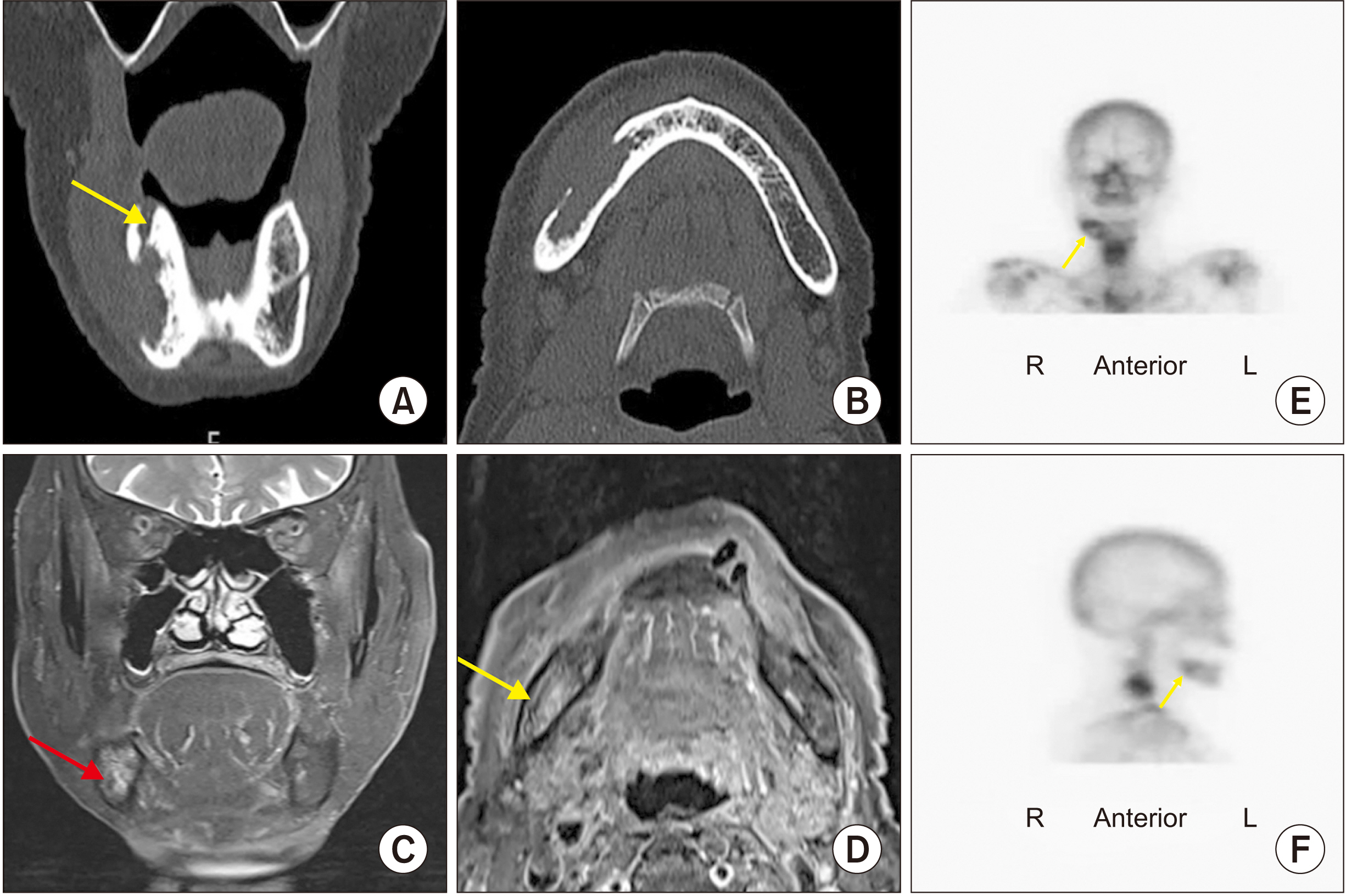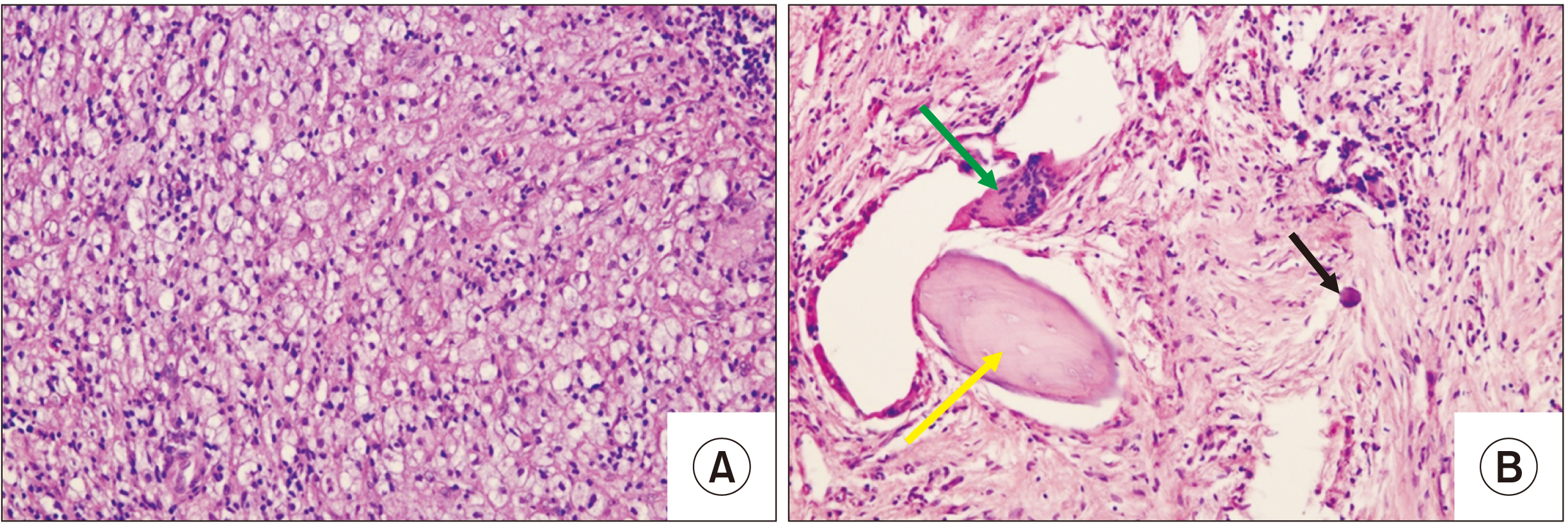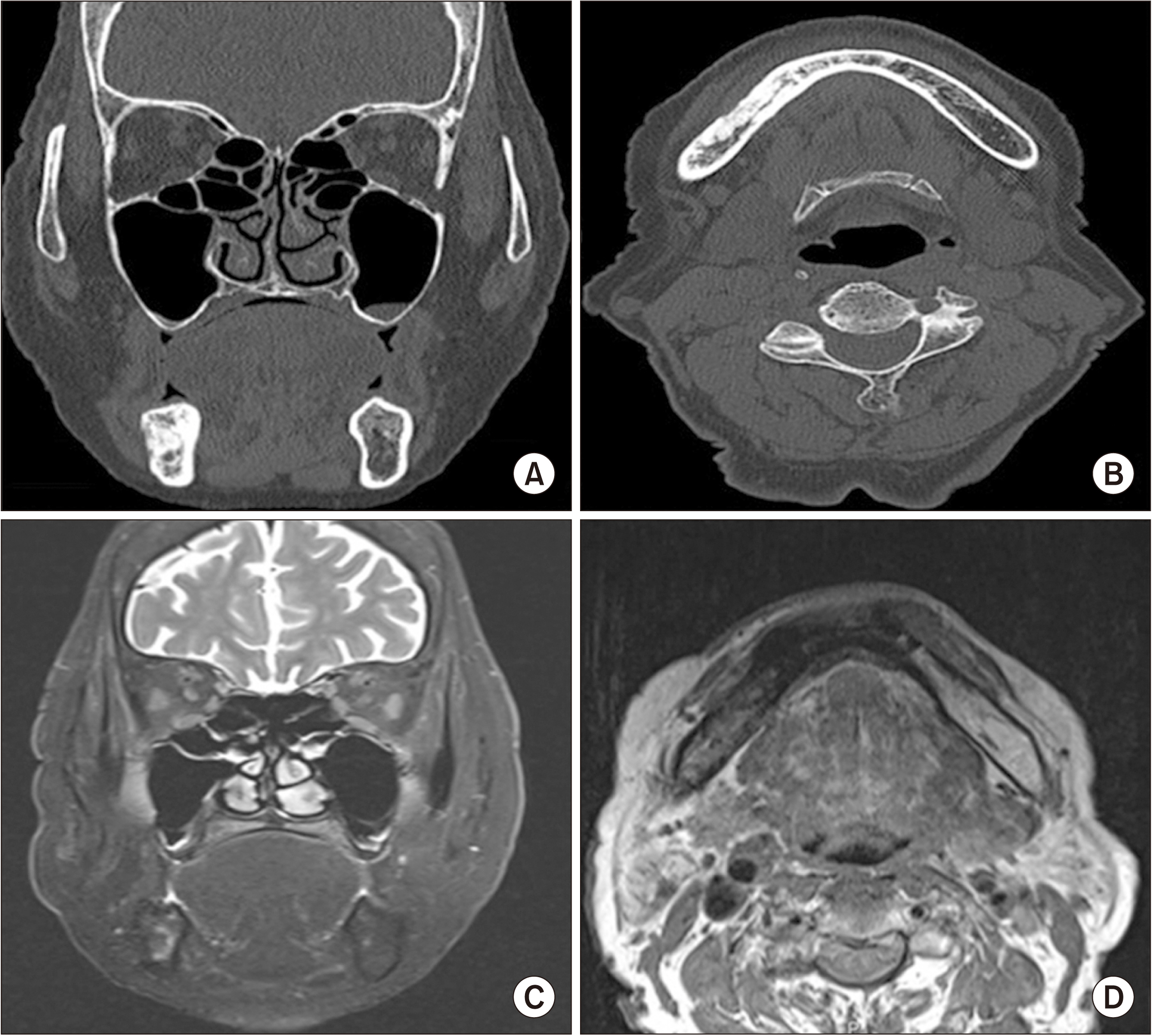J Korean Assoc Oral Maxillofac Surg.
2023 Dec;49(6):360-364. 10.5125/jkaoms.2023.49.6.360.
Xanthogranulomatous inflammation of the lower jaw bone: a rare case report
- Affiliations
-
- 1Department of Oral and Maxillofacial Surgery, Sun Dental Hospital, Daejeon, Korea
- 2Department of Oral and Maxillofacial Surgery, Daejeon Sun Hospital, Daejeon, Korea
- KMID: 2550300
- DOI: http://doi.org/10.5125/jkaoms.2023.49.6.360
Abstract
- Xanthogranulomatous inflammation (XGI) is an uncommon type of chronic inflammation and is histologically characterized by foamy histiocytes and giant cells. The most common sites of occurrence are kidneys and gallbladder. The etiology remains controversial. Involvement of the lower jaw bone is rare. In this study, we report a case of XGI presenting in the lower jaw.
Figure
Reference
-
References
1. Nomura T, Momose S, Takashima M, Kikuchi S. 2019; A case of neck xanthogranulomatous inflammation-suspected malignant tumor. Clin Case Rep. 7:1323–6. https://doi.org/10.1002/ccr3.2220. DOI: 10.1002/ccr3.2220. PMID: 31360477. PMCID: PMC6637363.2. Lee SH, Lee YH, Park H, Cho YJ, Song HT, Yang WI, et al. 2013; A case report of xanthogranulomatous osteomyelitis of the distal ulna mimicking a malignant neoplasm. Am J Case Rep. 14:304–7. https://doi.org/10.12659/ajcr.889422. DOI: 10.12659/AJCR.889422. PMID: 23961304. PMCID: PMC3745271.3. Solooki S, Hoveidaei AH, Kardeh B, Azarpira N, Salehi E. 2019; Xanthogranulomatous osteomyelitis of the tibia. Ochsner J. 19:276–81. https://doi.org/10.31486/toj.18.0165. DOI: 10.31486/toj.18.0165. PMID: 31528142. PMCID: PMC6735604.4. Cozzutto C, Carbone A. 1988; The xanthogranulomatous process. Xanthogranulomatous inflammation. Pathol Res Pract. 183:395–402. https://doi.org/10.1016/s0344-0338(88)80085-2. DOI: 10.1016/S0344-0338(88)80085-2. PMID: 3054826.5. Krishna M, Dayal S. 2021; Xanthogranulomatus inflammatory lesion mimicker of malignancy: a clinicopathological study from rural India. North Clin Istanb. 8:485–92. https://doi.org/10.14744/nci.2021.04317. DOI: 10.14744/nci.2021.04317. PMID: 34909587. PMCID: PMC8630717.6. Taskin OC, Gucer H, Winer D, Mete O. 2015; Thyroglossal duct cyst associated with xanthogranulomatous inflammation. Head Neck Pathol. 9:530–3. https://doi.org/10.1007/s12105-015-0628-y. DOI: 10.1007/s12105-015-0628-y. PMID: 25896144. PMCID: PMC4651935.7. Mehdinezhad-Kashani M, Zarif-Zakerian B, Shayan K, Riyasi F. 2010; Xanthogranulomatous osteomyelitis of femur: report of one case. Iran J Orthop Surg. 8:187–90.8. Cheema A, Arkader A, Pawel B. 2017; Xanthogranulomatous osteomyelitis of the humerus in a pediatric patient with Alagille syndrome: a case report and literature review. Skeletal Radiol. 46:1447–52. https://doi.org/10.1007/s00256-017-2707-5. DOI: 10.1007/s00256-017-2707-5. PMID: 28660405.9. Rawal YB, Chandra SR, Hall JM. 2017; Central xanthoma of the jaw bones: a benign tumor. Head Neck Pathol. 11:192–202. https://doi.org/10.1007/s12105-016-0764-z. DOI: 10.1007/s12105-016-0764-z. PMID: 27771838. PMCID: PMC5429282.10. Shimokata H, Kuzuya F. 1995; Two-point discrimination test of the skin as an index of sensory aging. Gerontology. 41:267–72. https://doi.org/10.1159/000213693. DOI: 10.1159/000213693. PMID: 8537010.
- Full Text Links
- Actions
-
Cited
- CITED
-
- Close
- Share
- Similar articles
-
- Cecal Cancer with Xanthogranulomatous Inflammation
- Focal Xanthogranulomatous Pyelonephritis Associated with Xanthogranulomatous Cholecystitis: A Case Report
- A Case of Xanthogranulomatous Pyelonephritis Associated with Xanthogranulomatous Epididymoorchitis
- Xanthogranulomatous Epididymitis
- A Case of Gossypiboma Associated with Xanthogranulomatous Inflammation







